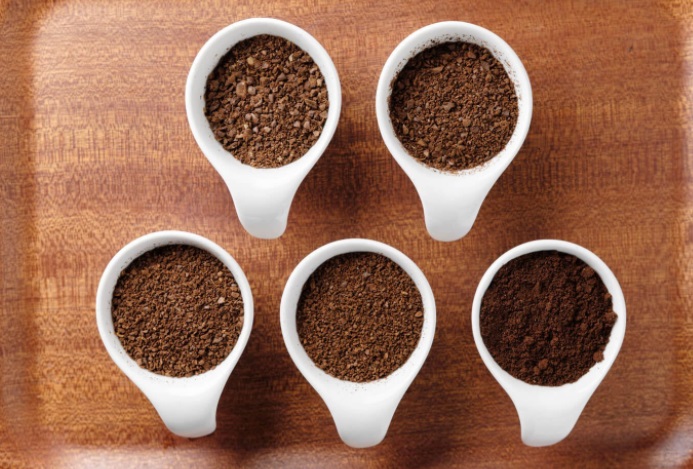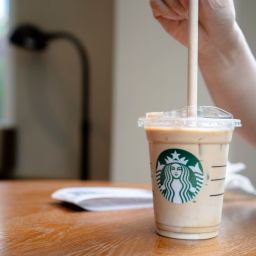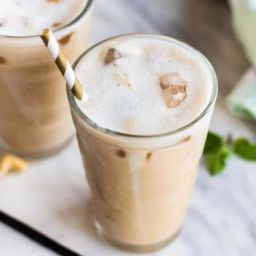
Grind size isn’t just a detail in coffee making; it’s a cornerstone of flavor excellence. Especially when it comes to percolator coffee, the grind size transforms from a mere variable into a pivotal decision. This brewing method, known for its rich and robust flavor profiles, demands a grind size that’s neither too fine nor too bulky. Striking the perfect balance ensures that each sip delivers the full, intended spectrum of coffee’s aromatic bliss. It’s not just about grinding beans; it’s about unlocking the essence of coffee with precision and care.
Key Takeaways
- The Optimal Grind: For percolator coffee, think coarse—reminiscent of cracked peppercorns or coarse sand. This texture prevents over-extraction (bitterness) and under-extraction (weakness), paving the way for a balanced cup.
- Choosing a Grinder: Burr grinders win the day with their consistency and adjustable settings. They allow for a uniform grind size, which is crucial for nailing the percolator’s requirements.
- Brewing Ratios and Timing: Getting the coffee-to-water ratio right (1:15 is a golden rule) and timing your brew can elevate your percolator coffee from good to great. It’s about harmony between quantity and time to extract the coffee’s full flavor without crossing into bitterness.
the Percolator Coffee Method
A coffee percolator is like a little adventure in your kitchen, transforming water and coffee grounds into a delightful cup of coffee through a journey of bubbling and brewing. It’s a device, either electric or stovetop, that brews coffee by continuously cycling the boiling brew through the grounds using gravity until it reaches the desired strength. This method is a bit of a show, with its distinctive perking sound and the aroma of brewing coffee filling the room.
The percolator consists of a pot with a small chamber at the bottom, which is placed closest to the heat source. Water in this chamber heats up and travels up a tube. On top of this tube sits a perforated basket filled with coffee grounds. The hot water then seeps through the grounds, picking up coffee flavors, before dripping back down into the main chamber to repeat the process. This cycle goes on until the coffee reaches the right strength.
The magic, or perhaps the science, of a percolator’s coffee lies significantly in the grind size. Because the water and coffee grounds meet multiple times during brewing, a coarse grind is essential to prevent over-extraction. Over-extraction is when too much coffee flavor is pulled out, leading to a bitter taste. A finer grind could also slip through the perforations, resulting in a gritty cup of coffee.
The coarseness akin to cracked peppercorns ensures that the water flows smoothly through the grounds, extracting the rich coffee flavors without the bitterness or sediment. This grind size caters specifically to the percolator’s brewing technique, balancing between too slow (over-extraction) and too fast (under-extraction) of water flow. The aim is to capture the coffee’s essence in each cycle, enriching the brew without overpowering it.
How to Choose the Right Coffee Grinder
When venturing into the world of home coffee brewing, selecting the right grinder is as crucial as choosing the best beans. There are mainly two types of grinders: burr and blade. Burr grinders work by crushing the beans between a non-moving surface and a grinding wheel. This method allows for a uniform grind, which is essential for any brewing method, especially percolators. On the other hand, blade grinders chop beans with blades, often resulting in inconsistent grind sizes. For percolator coffee, consistency is key to avoid over or under-extraction.
For those brewing with a percolator, a burr grinder is the way to go. Models like the Baratza Encore and Capresso Infinity offer a range of settings from fine to coarse, letting you dial in the perfect grind size for your percolator. These grinders stand out for their reliability, ease of use, and consistent results, making them a favorite among coffee enthusiasts.
Step-by-Step Guide to Grinding Coffee for Percolator
Choosing the right beans and grinding them correctly is the first step towards a perfect cup of percolator coffee. Here’s a simple guide:
- Select Your Beans: Start with fresh, whole beans for the best flavor. Look for medium to dark roasts, which typically pair well with the percolator’s robust extraction process.
- Set Your Grinder: Adjust your burr grinder to the coarse setting. The aim is for grounds that resemble coarse sand or cracked peppercorns, providing the right balance for water to extract flavors without pulling through too many fine particles.
- Measure Your Beans: Use about one tablespoon of coffee beans for every cup of water your percolator holds. This ratio may vary based on personal taste preferences.
- Grind in Bursts: Pulse the grinder in short bursts to avoid overheating the beans, which can affect their flavor. Check the grind size periodically to ensure it’s consistent and coarse enough for your percolator.
- Brew Immediately: For the best flavor, brew your coffee as soon as possible after grinding. Freshly ground beans offer the most aromatic and flavorful cup.
Tips for the Perfect Coarse Grind:
- Always grind in short bursts to maintain consistency.
- Clean your grinder regularly to avoid old grounds from mixing with fresh ones.
- Experiment with grind size and brewing time to find your perfect cup.
Brewing with a Percolator: Techniques for Perfection
Brewing with a percolator is an art that combines tradition with a touch of personal flair. To start, use a coffee-to-water ratio of 1:15, which ensures a balanced flavor without overpowering bitterness. The water temperature is crucial—aim for just off the boil, allowing the water to fully extract the coffee’s flavors without scalding it. Typical brewing time ranges from 7 to 10 minutes, but this can vary based on your taste preference. If the coffee tastes too strong, reduce the brewing time or the amount of coffee. For a stronger brew, do the opposite.
Adjusting the grind size and brewing time is key to customizing your coffee. If your brew tastes bitter, your grind may be too fine, or you’re brewing too long. Coarser grinds and shorter brewing times yield a smoother cup. Experiment to find what best suits your palate.
FAQs
Best coffee grind for a percolator? Coarse grind. It ensures the water can extract flavors efficiently without over-extraction.
Can I use regular ground coffee in a percolator? Yes, but ensure it’s coarse to prevent bitterness.
How long to grind coffee beans for a percolator? Aim for 8-10 seconds to achieve a coarse grind.
How much ground coffee do you put in a percolator? Follow a 1:15 coffee-to-water ratio for a well-balanced brew.
Final Thoughts
The journey to the perfect cup of percolator coffee is one of experimentation and discovery. The grind size, choice of grinder, and brewing technique play pivotal roles in shaping the flavor and strength of your brew. Whether you prefer a robust, full-bodied cup or a lighter, smoother sip, the key lies in adjusting variables to match your taste. So, embrace the process, tweak as you go, and revel in the ritual of brewing coffee that’s uniquely yours.









